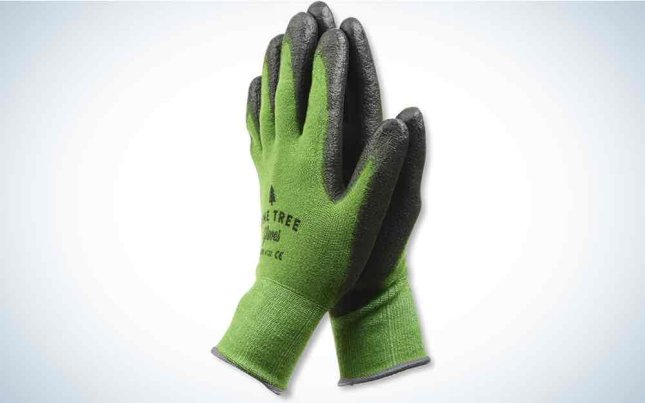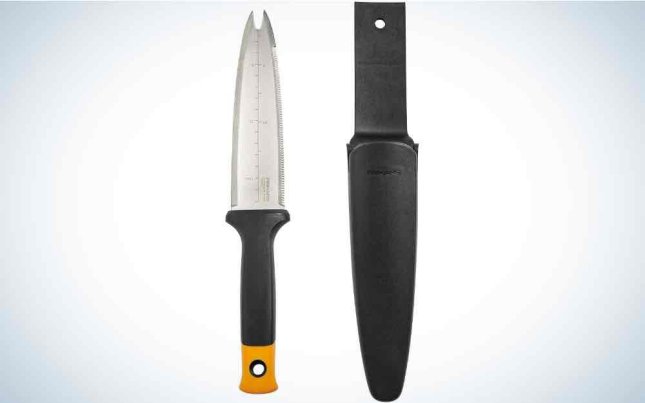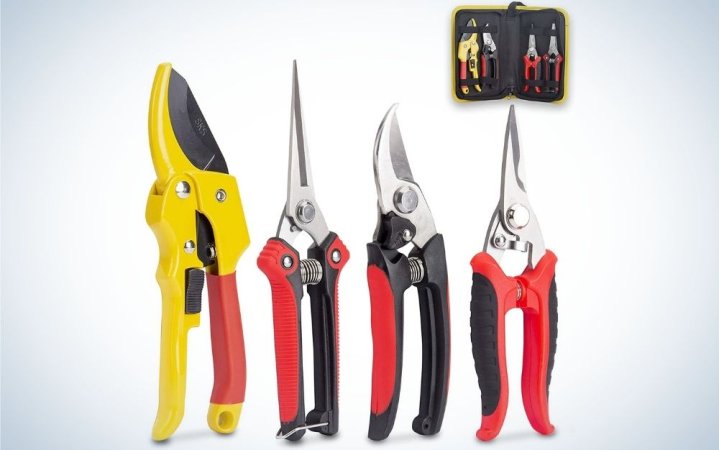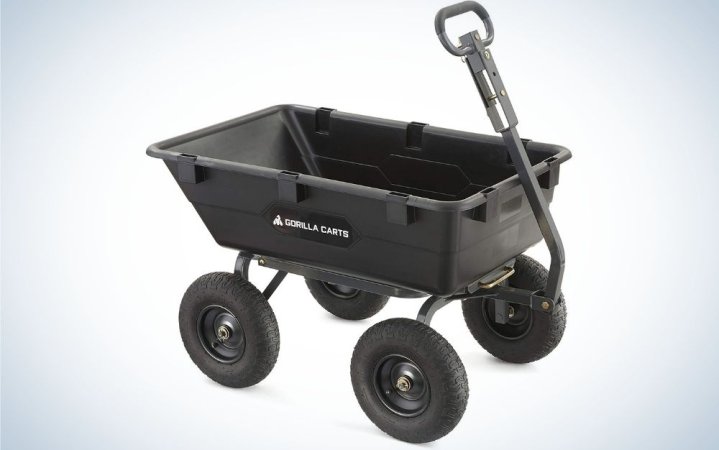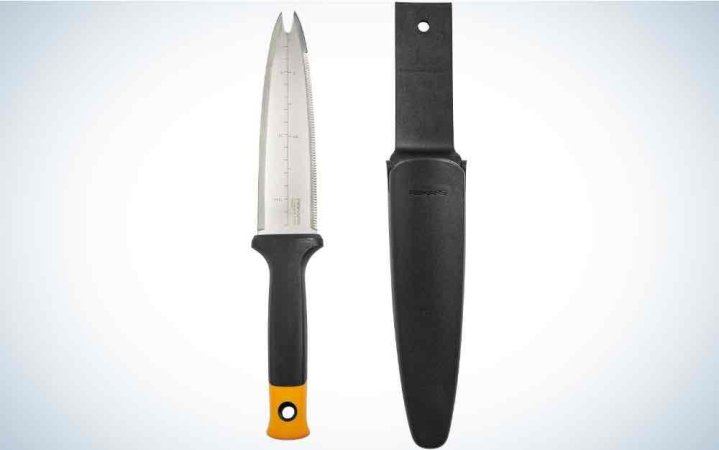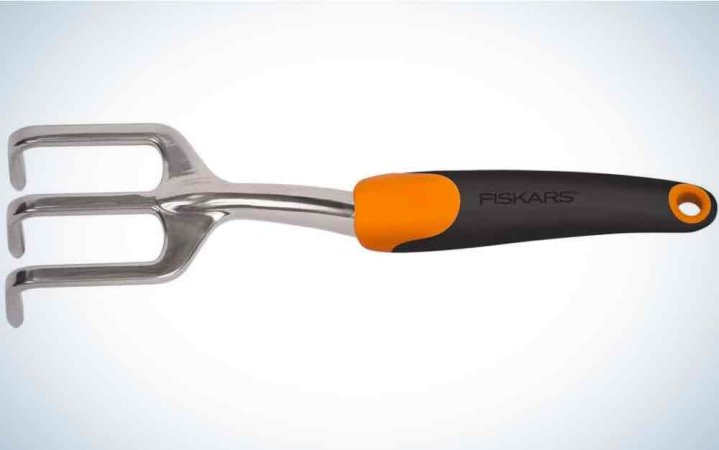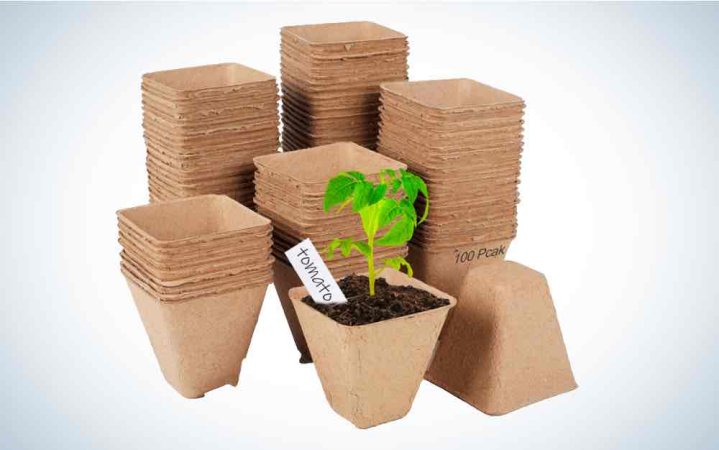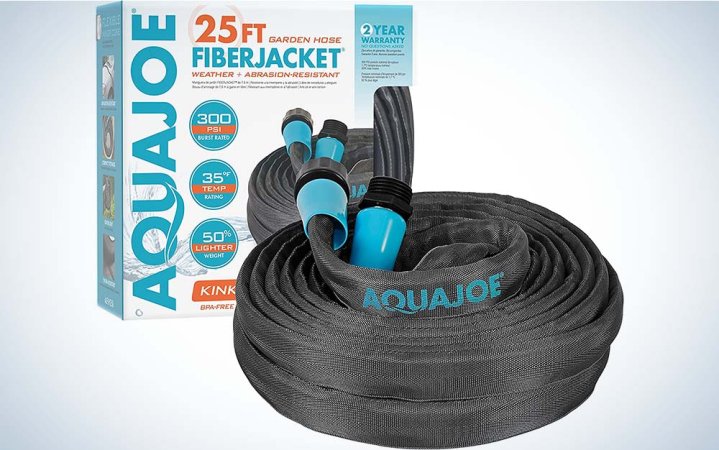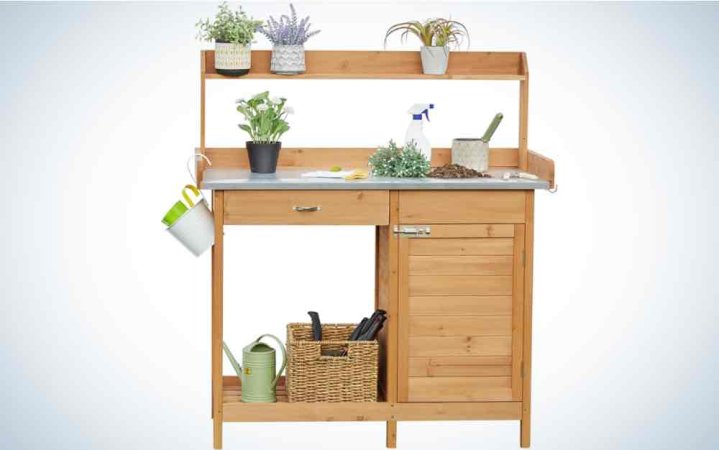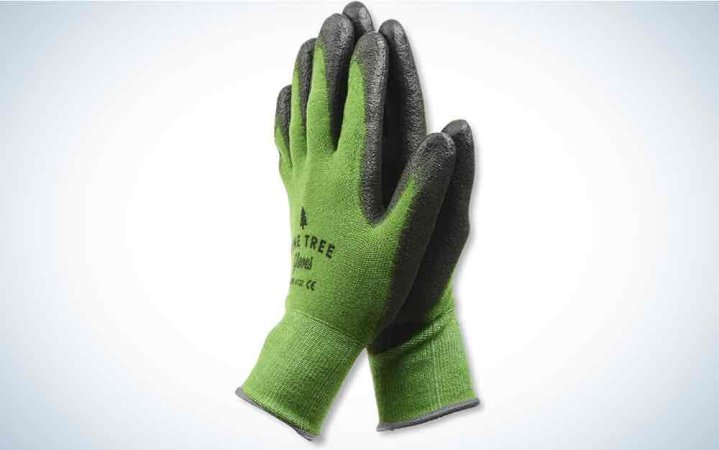We may earn revenue from the products available on this page and participate in affiliate programs. Learn more ›
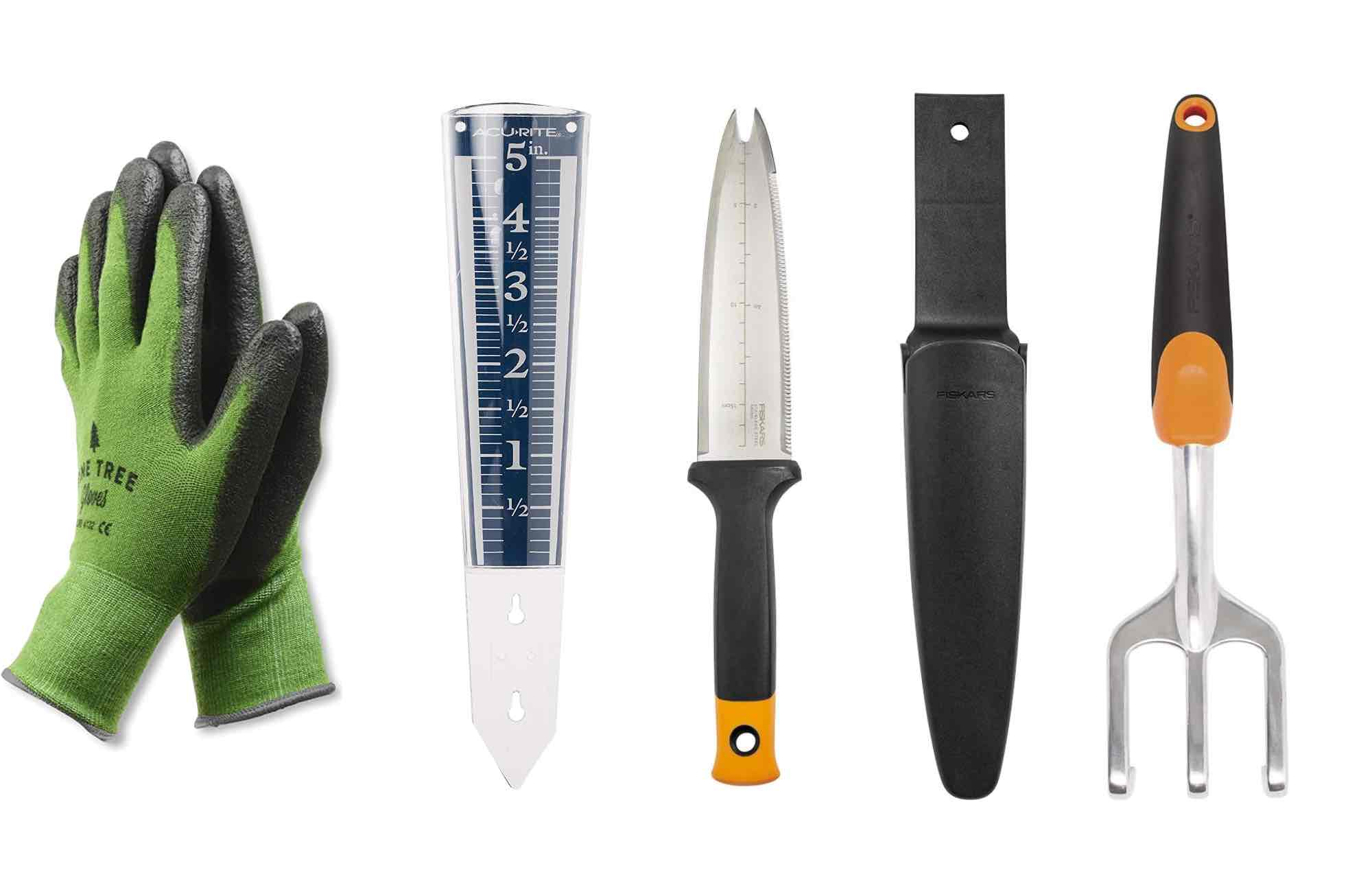
As the weather turns warmer, it’s only natural to want to spend time outdoors, which means polishing off your green thumb and grabbing some garden tools. Whether planting tomatoes in a stand-up planter or squash in a raised garden bed, there’s little as satisfying as watching your efforts pay off in the form of fresh, tasty food you can pick right in time for dinner. Seasoned pros already have a shed or basement full of equipment, but if you’re new to gardening, it can feel overwhelming to get started. The wrong gear can lead to frustration and wasted efforts, whereas the best gardening tools can help you get your garden planted, weeded, watered, pruned, and harvested easily.
- Best garden hose reel: Giraffe Retractable Hose Reel
- Best pruning shears: KOTTO Four-Pack Kit with Storage Bag
- Best wheelbarrow: Gorilla Carts Heavy-Duty Poly Yard Dump Cart
- Best shovel: Hooyman Short Handle Digging Shovel
- Best gardening knife: Fiskars Garden Hori Knife with Sheath
- Best hand rake: Fiskars Cultivator
- Best pots for seedlings: DSUWAZU Peat Pots for Seedlings
- Best garden hose: Aqua Joe iberJacket Non-Expanding Kink-Free Garden Hose
- Best rain gauge: AcuRite Magnifying Rain Gauge
- Best potting bench: Yaheetech Outdoor Garden Potting Bench
- Best gardening gloves: Pine Tree Tools Bamboo Gardening Gloves
Best garden hose reel: Giraffe Retractable Hose Reel
Keeping It Reel For Real
If you’ve ever used a vacuum with a retractable cord, you know it’s hard to go back to winding long cords up yourself. The Giraffe is the best garden hose reel because it’s self-winding and can lock at any length you need. It’s 100 feet of ½-inch hose, wall-mountable with just four screws and anchors, and it’s a sturdy unit that retracts slowly so you won’t hurt yourself.
Best pruning shears: KOTTO Four-Pack Kit with Storage Bag
All Four One, One For All
When it comes to garden clippers, you will likely want more than one type. For delicate work, like cutting herbs, you need something precise and narrow, whereas you’ll need something more heavy-duty with thicker branches and stems. The best pruning shears depend on your job, but versatile bypass pruning shears that make sharp, clean cuts are generally a must-have for any garden, and clippers or scissors are easier to work with when you need precision so you don’t wind up cutting things you don’t mean to cut. So the best choice is … all of the above, which you get in this convenient gardening kit.
Best wheelbarrow: Gorilla Carts Heavy-Duty Poly Yard Dump Cart
For Big Hauls
The best wheelbarrow for your garden can easily and efficiently haul what you need, and this Gorilla cart fits the bill: It has a padded handle that can be pulled by hand or converted to hook up to a tractor or ATV. The difference between a traditional wheelbarrow and a dump cart is that the latter has a simple mechanism to release the tub vertically to dump out whatever you’re carrying easily—rocks, logs, dirt, what have you. This dump cart is versatile and easy to maneuver.
Best shovel: Hooyman Short Handle Digging Shovel
Hooyman Short Handle Digging Shovel
A good shovel is essential when digging flower beds or planting vegetables, and the no-slip handle on this one from Hooyman makes all the difference. Both the handle and shaft grips are textured, which makes them easy to grab even when your hands are sweaty, or you’re working in the rain. The shovel’s carbon blade is serrated, which Hooyman says makes it easier to break up rocks, too.
Best gardening knife: Fiskars Garden Hori Knife with Sheath
Fiskars Garden Hori Knife with Sheath
Slicing a small branch or pruning vegetables? A gardening knife is the best tool for the job, and we like the Hori Knife from Fiskars because of its two-sided construction and built-in ruler. One side of this knife is a standard blade, while the other is serrated, which means it’s ready for both slicing and cutting. Its forked tip was specifically designed for cutting through the thin stems of small weeds. The knife’s hilt has raised edges, which give you a safe place to rest your index finger and thumb while cutting things, and the included sheath is perfect for storage.
Best hand rake: Fiskars Cultivator
Fiskars Cultivator
Some digging jobs don’t require a shovel, which is where Fiskars’ Cultivator comes in clutch. The hand rake has cast-aluminum prongs, a grippy handle, and a circular hole for easy storage on a pegboard. This tool is deceptively simple but can be used for loosening or aerating soil, and removing weeds. You could also use it to dig smaller holes for vegetable or fruit planting, or to help excavate potatoes when they’re ready to be harvested.
Best pots for seedlings: DSUWAZU Peat Pots for Seedlings
DSUWAZU Peat Pots for Seedlings
If you want to kickstart your gardening indoors before your area gets warm enough to keep plants outside, you’ll want a set of seeding pots. This 100-piece from DSUWAZU may seem excessive, but the pint-sized pots will last several years and even come with plant labels. We like these seedling pots because they’re made of a biodegradable material, which will break down in soil over time. The pots will stay intact before you use them, however, so picking up a big set now means you’ll be ready for several planting seasons.
Best garden hose: Aqua Joe iberJacket Non-Expanding Kink-Free Garden Hose
Aqua Joe iberJacket Non-Expanding Kink-Free Garden Hose
Carrying a garden hose can be cumbersome, but this one from Aqua Joe makes it a lot easier. The 25-foot hose’s outer jacket is made from marine-grade fiber that’s abrasion resistant and won’t get kinked or twisted. Additionally, the materials Aqua Joe used are free from BPA, lead, and phthalates. The company says its host is roughly half the weight of a traditional one, which makes a big difference when hauling it around your backyard. The thin hose can also be easily stored in a shed or garage once gardening season is over, though Aqua Joe says it can be used in temperatures as low as 0 degrees Fahrenheit.
Best rain gauge: AcuRite Magnifying Rain Gauge
AcuRite Magnifying Rain Gauge
Water is essential to all life, but too much can kill your plants, so AcuRite’s Magnifying Rain Gauge is a gardening essential. It can measure up to five inches of rain, and the larger numbers are easy to read from a distance. A stake at the bottom of the rain gauge will keep it in the ground during inclement weather, but its holes allow you to screw it into the side of your home if you’d prefer to keep it elevated. In either case, its acrylic coating will prevent it from getting damaged.
Best potting bench: Yaheetech Outdoor Garden Potting Bench
Yaheetech Outdoor Garden Potting Bench
If you have enough space, a potting bench will allow you to keep all of your most-used tools in one place and give you a solid surface to pot your plants before they go outside. This one from Yaheetech has a 44.1-inch tabletop and stands 49.2-inches tall. This is enough space for you to spread out your tools and work for hour-long stretches without getting a backache. We like this potting bench because it has plentiful storage, including a top shelf, pull-out drawer, bottom shelf, and side cabinet. The cabinet has a latch, so its contents can be kept secure. Our favorite touch is the three hooks on the right side for hanging handheld tools. Most of the potting bench is wood, but its tabletop is made out of metal, which is more durable and won’t stain when soil gets spilled on it.
Best gardening gloves: Pine Tree Tools Bamboo Gardening Gloves
Pine Tree Tools Bamboo Gardening Gloves
Last but not least, a pair of gardening gloves is the most fundamental item we’re recommending, and they should always be worn. This is to avoid minor cuts and scrapes, but more importantly, exposure to poison ivy and ticks. This pair from Pine Tree Tools are available in multiple sizes, are easy to spot because of their green color, and is thin enough to give you complete control over all your fingers. They’re even touchscreen-friendly in case you need to use your phone. A textured grip on the palm-side of the gloves will make handheld tools even easier to hold, while their cuff makes them easy on your wrist and simple to remove.
FAQs
There’s no single answer to the question of who makes the best garden tools because there are different brands known best for different types of gardening tools. For instance, Fiskars is known for its shovels and spades, while Gorilla is known for the best wheelbarrows and garden carts.
The key to keeping garden tools in good condition is to keep them away from moisture. And the problem isn’t only rain; leaving them in the dirt or on grass that gets damp with morning dew will likely cause metal tools to rust and degrade and wooden handles to split, crack, warp, rot, or dry out. It’s important to clean your tools off after each use (and dry them) and then store them away from the elements—in a shed, garage, or storage box. Ideally, you’ll hang any tools, such as full-size shovels or rakes, on a wall, as concrete floors can retain moisture. You may also want to rub wooden handles with linseed oil from time to time to keep them in good condition.
When preparing a plot in the ground for backyard gardening, you’ll need a soil test kit to check whether your soil is ready for gardening. Then you’ll need to cut down unwanted plants with a chainsaw or pruners. If you have grass growing in the area, you can kill it off by spreading newspapers over the area and putting mulch on top to hold it down. You may need to use a root-killing tool if there’s anything deeply rooted in the area. You’ll need a good tiller once you’re ready to prep the soil—go for an electric one if you possibly can, as it’ll save you a lot of strain. You’ll also need a rake to even out the soil, and a shovel or spade for digging and planting.
This depends on the type of tool and whether they’re electronic or not. Most of our recommendations cost under $50 and cover a majority of everyday gardening use cases.
Final thoughts on the best garden tools
- Best garden hose reel: Giraffe Retractable Hose Reel
- Best pruning shears: KOTTO Four-Pack Kit with Storage Bag
- Best wheelbarrow: Gorilla Carts Heavy-Duty Poly Yard Dump Cart
- Best shovel: Hooyman Short Handle Digging Shovel
- Best gardening knife: Fiskars Garden Hori Knife with Sheath
- Best hand rake: Fiskars Cultivator
- Best pots for seedlings: DSUWAZU Peat Pots for Seedlings
- Best garden hose: Aqua Joe iberJacket Non-Expanding Kink-Free Garden Hose
- Best rain gauge: AcuRite Magnifying Rain Gauge
- Best potting bench: Yaheetech Outdoor Garden Potting Bench
- Best gardening gloves: Pine Tree Tools Bamboo Gardening Gloves
If you put the time and effort into being the best plant parent you can be, investing in the best garden tools you can afford can make your job easier and help you achieve better results. Once you have the right garden equipment for the job, you may find that your hobby becomes a better stress-buster, and your harvest becomes more abundant. Happy gardening!
